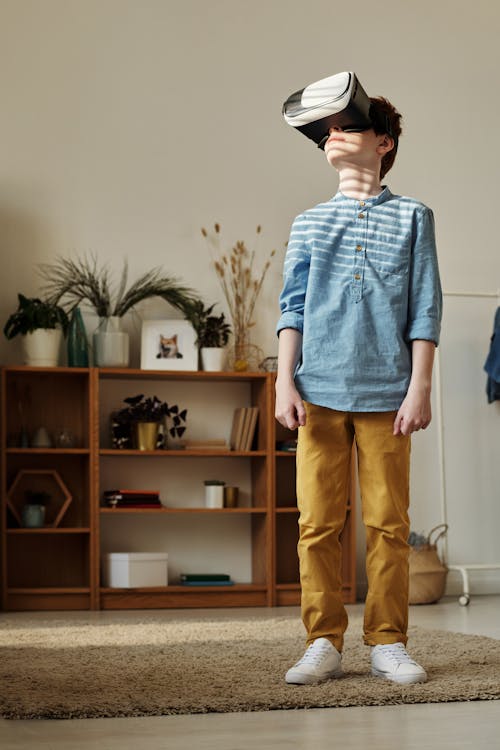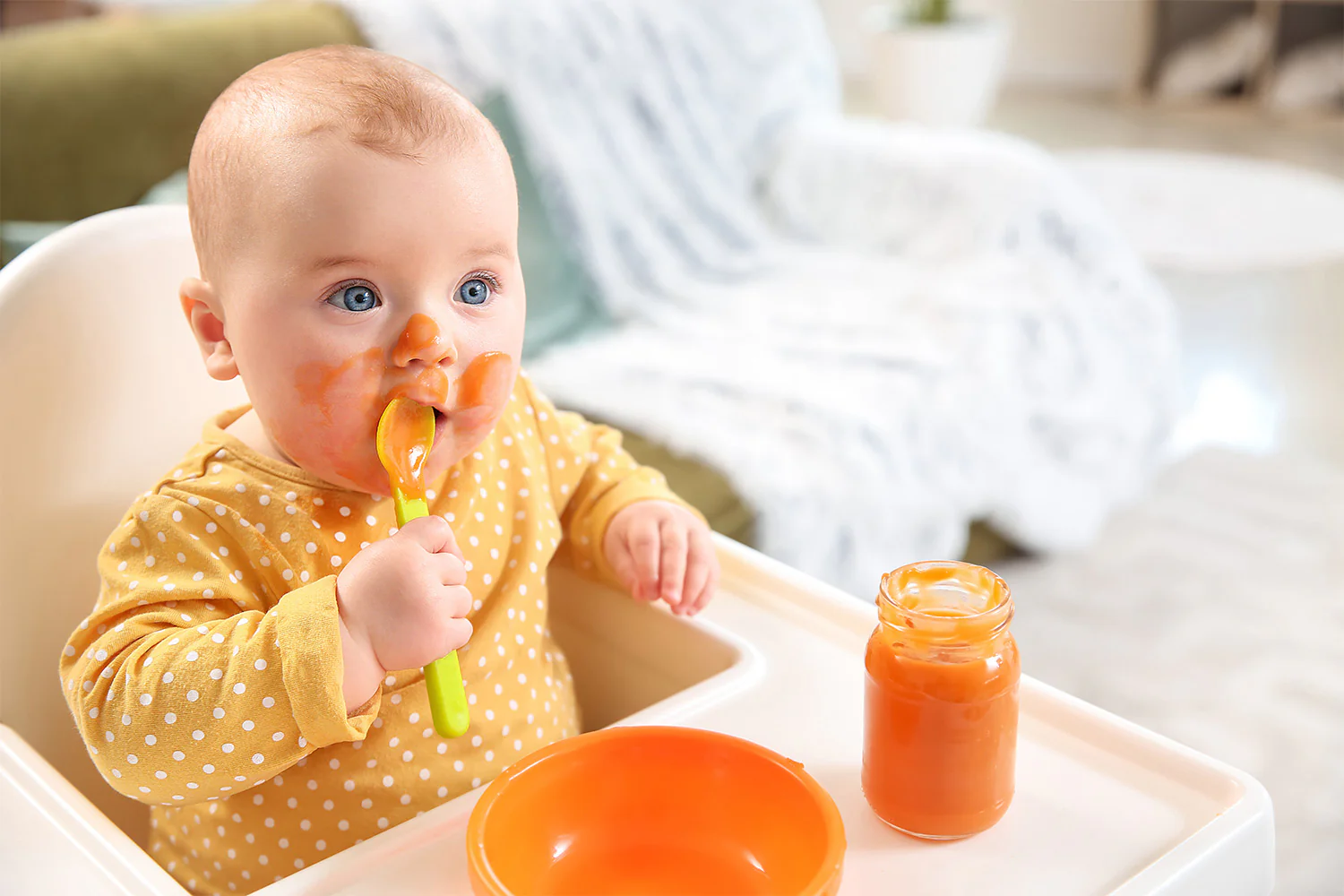Table of Contents
- Why Arts and Crafts Are More Than Just Fun and Games: The Developmental Superpowers
- Age-Appropriate Arts and Crafts Ideas: Nurturing Creativity at Every Stage
- Making it Happen: Practical Tips for Parents and Caregivers
- Simple, Engaging Craft Project Ideas to Get You Started
- The Last Brushstroke: Why Creative Time Matters
Unleash Potential: The Incredible Power of Arts and Crafts for Child Development (Ideas & Tips Included!)
Remember those days filled with glitter glue, construction paper chaos, and the triumphant feeling of creating something uniquely yours? Maybe it was a lopsided clay pot, a finger-painted masterpiece destined for the fridge, or a macaroni necklace gifted with pure love. Beyond the fun and occasional mess, these arts and crafts activities were doing something profound: shaping your developing brain and body. In today’s fast-paced, screen-dominated world, carving out time for hands-on creativity is more crucial than ever for our children. It’s not just about keeping them busy; it’s about nurturing essential skills that form the bedrock of their future learning and well-being.
Many parents see arts and crafts as a pleasant pastime, a way to fill a rainy afternoon. But dive a little deeper, and you’ll discover a treasure trove of developmental benefits packed into every squeeze of glue and stroke of a paintbrush. From enhancing fine motor skills to boosting cognitive development and fostering emotional expression, creative activities are powerful learning tools disguised as fun. This article explores why incorporating arts and crafts for child development is so vital, offers age-appropriate ideas, and provides practical tips to make creative time a joyful and enriching experience for both you and your child.

Why Arts and Crafts Are More Than Just Fun and Games: The Developmental Superpowers
Let’s break down the incredible ways engaging in creative activities for kids supports their growth across multiple domains.
Building Fine Motor Skills Brick by Brick (or Bead by Bead!)
Think about the actions involved in most crafts: holding a crayon, manipulating scissors, rolling playdough, threading beads, scrunching paper, painting tiny details. These activities require intricate movements of the small muscles in the hands, fingers, and wrists. This is the essence of fine motor skills development.
- Hand-Eye Coordination: Activities like drawing, painting, cutting along lines, and placing collage pieces require children to coordinate what they see with what their hands do. This skill is fundamental for writing, typing, playing sports, and even everyday tasks like buttoning a shirt or using utensils.
- Dexterity and Strength: Squeezing glue bottles, kneading dough, using hole punches, and manipulating small objects build strength and dexterity in little hands. This prepares them for tasks requiring precision, like handwriting.
- Bilateral Coordination: Many crafts involve using both hands together, sometimes performing different tasks simultaneously (e.g., holding paper while cutting, stabilizing a pot while painting). This ability to coordinate both sides of the body is crucial for many complex skills.
Consistently engaging in these activities refines these skills, making future tasks like writing letters and numbers much easier and less frustrating.
Boosting Brainpower: Cognitive Development Through Creativity
Arts and crafts are fantastic workouts for a child’s brain, fostering critical thinking and problem-solving abilities.
- Problem-Solving: How do I make this tower stand up? What happens if I mix these two colors? How can I attach this piece without glue? Crafting presents children with mini-challenges that encourage them to think critically, experiment, and find solutions. They learn cause and effect (e.g., too much water makes paint runny) and sequential thinking (following steps to build something).
- Creativity and Imagination: This is perhaps the most obvious benefit. Arts and crafts provide a space for children to express their unique ideas and bring their imagination to life. There’s no single ‘right’ way to create, which encourages divergent thinking – exploring multiple possibilities and solutions. This fosters innovation and adaptability.
- Decision Making: Choosing colors, materials, shapes, and designs empowers children to make choices and see the results. Even simple decisions like selecting which crayon to use contribute to developing confidence in their judgment.
- Focus and Concentration: Engaging in a craft project requires sustained attention. Children learn to focus on the task at hand, follow through with their ideas, and experience the satisfaction of completion, gradually increasing their attention span.
- Visual-Spatial Skills: Understanding shapes, sizes, colors, and their relationships in space is crucial. Activities like drawing, sculpting, and building help children develop these visual-spatial processing skills, important for subjects like math and science later on.
A Canvas for Feelings: Emotional Expression and Regulation
Sometimes, words aren’t enough, especially for young children still learning to articulate complex emotions. Art provides a safe and non-verbal outlet for expressing feelings.
- Emotional Outlet: Pounding playdough can release frustration, while painting serene colors might reflect calmness. Creating art allows children to process and communicate emotions like happiness, sadness, anger, or excitement in a tangible way.
- Self-Esteem and Confidence: Completing a project, regardless of the perceived quality of the final product, gives children a sense of accomplishment. Seeing their work displayed validates their efforts and boosts their self-worth. The focus should always be on the effort and the creative process.
- Stress Relief: The act of creating can be incredibly therapeutic and calming. Focusing on the sensory aspects of materials (the feel of paint, the texture of clay) can be meditative and help reduce anxiety.
Learning Together: Social and Language Skills
While crafting can be a solitary activity, doing it with others – siblings, friends, or parents – adds another layer of developmental benefits.
- Collaboration and Sharing: Group craft projects encourage children to share materials, take turns, discuss ideas, and work towards a common goal.
- Communication: Talking about their art helps children develop descriptive language skills. Asking them questions like “Tell me about your picture?” or “Why did you choose that color?” encourages them to articulate their thoughts and ideas. They learn new vocabulary related to colors, shapes, textures, and actions (cutting, gluing, mixing).
- Following Instructions: Participating in guided craft activities helps children practice listening skills and learn to follow directions, an essential skill for school readiness.

Age-Appropriate Arts and Crafts Ideas: Nurturing Creativity at Every Stage
Children’s abilities and interests evolve rapidly. Choosing activities suited to their developmental stage ensures they feel successful and engaged, not frustrated.
Toddlers (1-3 Years): Sensory Exploration is Key
At this age, the focus is on exploration and sensory experiences rather than creating recognizable objects. Safety and non-toxic materials are paramount.
- Finger Painting: Edible or non-toxic finger paints on large sheets of paper allow for messy, sensory fun. Focus on the feeling and color mixing.
- Playdough Exploration: Provide large, non-toxic playdough chunks. Toddlers will enjoy squishing, poking, pulling, and rolling. Simple tools like plastic cookie cutters (with supervision) can be introduced.
- Simple Stamping: Use large, easy-to-grip stamps (like cut potatoes or sponges) with washable paint.
- Collage with Large Pieces: Offer large, textured items like fabric scraps, cotton balls, or chunky yarn to glue onto paper (using non-toxic glue sticks or paste applied by an adult).
- Water Play Painting: Simply “painting” outdoor surfaces like fences or sidewalks with water and a large brush is mess-free fun that helps with large motor skills and understanding cause/effect (evaporation).
Parent Tip: Keep sessions short, focus on the process (squishing, smearing), and supervise closely.
Preschoolers (3-5 Years): Developing Skills and Imagination
Preschoolers have better fine motor control and longer attention spans. They enjoy creating things that represent objects or tell stories.
- Cutting Practice: Provide child-safe scissors and lines/simple shapes drawn on paper to cut out. Start with straight lines, then curves and zig-zags.
- Gluing Mastery: Introduce liquid glue (with guidance) alongside glue sticks for collages using smaller paper shapes, pasta, buttons, or natural items.
- Painting with Brushes: Offer washable tempera paints and various brush sizes. Encourage color mixing and painting representations of things they know (houses, sun, people).
- Sculpting with Clay/Dough: Introduce more tools like rolling pins and plastic knives. Encourage making simple shapes, animals, or figures.
- Process Art: Focus on the technique, like marble painting (rolling paint-covered marbles in a box), string painting (pulling paint-soaked string across paper), or bubble wrap printing.
- Simple Puppet Making: Decorate paper bags or socks to create hand puppets.
Parent Tip: Ask open-ended questions about their creations. Offer a wider variety of materials but avoid taking over the project.
Early Elementary (6-8 Years): Refining Techniques and Expressing Ideas
Children in this age group can follow more complex instructions, handle tools with greater precision, and express more detailed ideas through their art.
- More Detailed Drawing and Painting: Introduce different mediums like oil pastels, crayons, markers, watercolors. Encourage drawing from observation or imagination with more detail.
- Basic Weaving: Simple looms made from cardboard can be used for weaving yarn or fabric strips.
- Origami: Start with simple folds and progress to basic animal shapes. Great for following instructions and spatial reasoning.
- Model Making: Using craft sticks, recycled materials, or simple kits to build structures or vehicles.
- Simple Sewing/Lacing: Practice basic stitches on burlap or felt, or use lacing cards.
- Beadwork: Creating jewelry or patterns with smaller beads enhances fine motor precision.
Parent Tip: Encourage experimentation with different techniques. Help them break down complex projects into smaller steps.
Older Children (9+ Years): Exploring Advanced Techniques and Personal Style
Older children can tackle more complex projects, develop specific interests, and begin to hone their personal artistic style.
- Advanced Drawing/Sketching: Introduce concepts like perspective, shading, and proportion. Sketchbooks are great tools.
- Painting on Canvas: Experimenting with acrylics or oils (with proper ventilation and guidance).
- Pottery/Clay Sculpting: Working with air-dry or kiln-fired clay to create functional or decorative pieces.
- More Complex Sewing/Textile Arts: Creating simple garments, stuffed animals, or decorative items. Tie-dye and batik offer fun textile experiences.
- Printmaking: Linocut or simple screen printing techniques.
- Digital Art Introduction: Exploring drawing tablets or simple graphic design software if interested.
- Jewelry Making: Using more intricate techniques and materials.
Parent Tip: Support their specific interests by providing appropriate materials or seeking out classes/workshops. Encourage research and learning new techniques independently.

Making it Happen: Practical Tips for Parents and Caregivers
Knowing the benefits is one thing; integrating regular arts and crafts time into a busy schedule is another. Here are some practical tips to make creativity a natural part of your child’s life:
1. Designate a Creative Zone
It doesn’t have to be fancy! A corner of the kitchen, a small table in the playroom, or even a portable bin can work. Having a designated space (and ideally, accessible supplies) makes it easier to start projects spontaneously and contains the inevitable mess.
2. Stock Up on Basic Supplies
You don’t need an expensive art store haul. Start with the basics:
- Paper (construction paper, plain white paper, maybe some cardstock)
- Drawing tools (crayons, washable markers, colored pencils)
- Child-safe scissors
- Glue (sticks and washable liquid glue)
- Washable paint (tempera or watercolor) and brushes
- Playdough or air-dry clay
- Recycled materials (cardboard boxes, toilet paper rolls, plastic containers, bottle caps, old magazines) – a treasure trove!
- Optional extras: yarn, craft sticks, pipe cleaners, googly eyes, stamps, stickers, beads.
3. Embrace the Mess (Within Reason!)
Creativity can be messy. Prepare for it! Use washable materials whenever possible. Cover surfaces with newspaper or a cheap plastic tablecloth. Put an old oversized t-shirt on your child as a smock. Trying to keep everything pristine stifles exploration. Build cleanup time into the activity itself – make it part of the routine.
4. Focus on the Process, Not the Product
This is arguably the most important tip for fostering child development through art. Resist the urge to correct their work or show them the ‘right’ way. Let them experiment, make ‘mistakes’ (which are often learning opportunities), and explore their own ideas. Praise their effort, choices, and the process itself (“Wow, you worked really hard on mixing those colors!” or “I love how you decided to add sparkles there!”) rather than just the final outcome.
5. Ask Open-Ended Questions
Engage with your child about their creation without judgment. Instead of asking “What is it?” (which can put pressure on them if it’s abstract), try questions like:
- “Can you tell me about what you made?”
- “What was your favorite part of making this?”
- “How did you get that interesting texture?”
- “What were you thinking about while you were creating?”
This encourages language development and shows you value their thoughts and process.
6. Display Their Masterpieces
Show your child you value their creativity by displaying their work. The fridge, a dedicated bulletin board, or even simple frames make children feel proud and validated. Rotate the displays regularly.
7. Prioritize Safety
Always choose non-toxic materials appropriate for your child’s age. Supervise young children, especially when using scissors, small items (choking hazards), or liquid glue. Teach proper tool usage and safety rules.
8. Make it a Shared Experience (Sometimes!)
While independent creation is valuable, crafting together can be a wonderful bonding activity. Sit alongside your child and create your own art, or work collaboratively on a project. Just remember tip #4 – let them lead!

Simple, Engaging Craft Project Ideas to Get You Started
Need some inspiration? Here are a few ideas using readily available materials:
1. Nature Collage
- Skills: Fine motor (picking up small items, gluing), observation, creativity.
- Materials: Paper or cardboard, glue, items collected from a nature walk (leaves, twigs, fallen petals, small pebbles, seeds – ensure they are dry).
- Process: Go for a walk and collect interesting natural items. Arrange and glue them onto the paper to create a picture or pattern. Talk about the different textures and shapes.
2. Salt Dough Ornaments/Figures
- Skills: Fine motor (kneading, rolling, shaping), following instructions, creativity.
- Materials: 2 cups flour, 1 cup salt, ¾ cup water. Optional: cookie cutters, items for pressing patterns (forks, leaves), paint for decorating later.
- Process: Mix flour and salt, gradually add water until a dough forms. Knead for 5-10 minutes until smooth. Roll out the dough and cut shapes or sculpt figures. Use a straw to make a hole for hanging if desired. Bake at 250°F (120°C) for 2-3 hours until hard. Once cool, decorate with paint.
3. DIY Puppets (Paper Bag or Sock)
- Skills: Fine motor (cutting, gluing, drawing), imagination, storytelling.
- Materials: Paper lunch bags or old clean socks, construction paper scraps, yarn, googly eyes, markers, glue, child-safe scissors.
- Process: Decorate the bag or sock to create a character. Glue on yarn for hair, paper shapes for clothes or features, and googly eyes. Use markers to draw details. Once dry, put on a puppet show!
4. Recycled Material Robots/Sculptures
- Skills: Problem-solving, creativity, fine motor (attaching pieces), spatial reasoning.
- Materials: Clean recyclables (boxes, plastic bottles, tubes, lids, yogurt cups), tape, glue, optional: paint, markers, foil.
- Process: Challenge your child to build something using the recycled materials. How can they attach different pieces? What kind of creature or structure can they imagine? Let their creativity run wild!
The Last Brushstroke: Why Creative Time Matters
In a world increasingly focused on academic benchmarks and digital proficiency, the simple, messy, joyful act of creation holds immense power. Arts and crafts for child development isn’t just a ‘nice-to-have’; it’s a fundamental building block for learning, emotional intelligence, and problem-solving prowess. By providing the space, materials, and encouragement for creative exploration, you’re giving your child invaluable tools that extend far beyond the craft table.
From the enhanced fine motor skills needed for writing to the cognitive development that fuels innovation, and the emotional outlet that builds resilience, the benefits are clear and compelling. So, embrace the glitter, tolerate the paint smudges, and celebrate the uniquely wonderful creations (and creators!) in your home. Making time for arts and crafts is an investment in your child’s holistic development, sparking imagination and building skills that will last a lifetime. Let the creativity begin!










